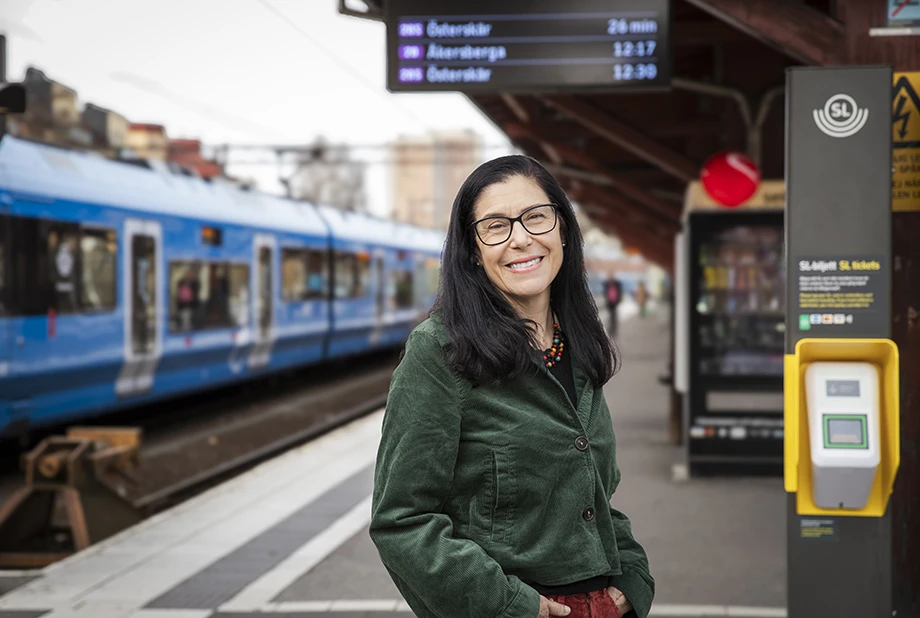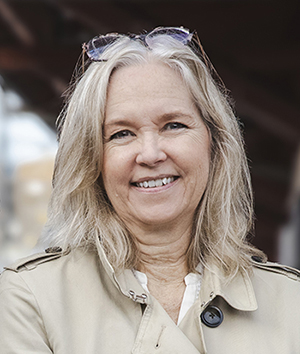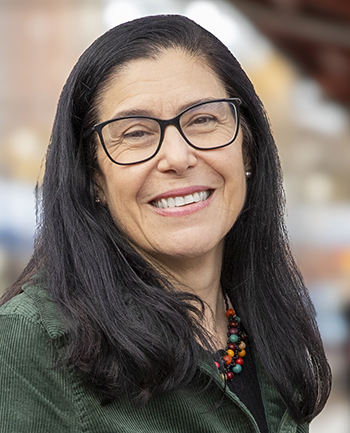Feeling safe at the station – a question of fairness

Theme: Tech for whom?
The feeling of safety at Swedish railway stations varies significantly between different groups. Women, LGBTQI people and people with disabilities more often feel unsafe in station environments, which means that public transport is not equally accessible to everyone.
Feeling safe on the way to work, school or friends is a given for many, but in the research report ‘What makes a railway station safe – and for whom? ’, produced by researchers Vania Ceccato, professor of urban planning and safety at KTH, Gabriel Gliori, research engineer at KTH, and Catherine Sundling, project researcher at Södertörn University, examines how different people experience safety and security at Swedish railway stations.
The study covers 47 stations in 28 municipalities across the country and was conducted through surveys, interviews, visits to stations and crime statistics to understand perceived insecurity. The results clearly show that security is not a neutral issue, but is influenced by gender, age, identity and functional ability.
According to the research study, 34 per cent of passengers feel unsafe, and similar figures are found among those who have witnessed a crime. Behind the statistics, there are apparent differences. Women and those who identify as LGBTQI, as well as people with disabilities, experience significantly higher levels of insecurity.
Minor incidents are rarely reported
Many stations lack staff, while others have several actors with responsibilities. The segmented system makes it difficult to get an overall picture of the crimes that occur at and around a station and what causes people to feel unsafe.
Minor incidents are rarely reported to the police because they are not classified as crimes, and information about crime and safety is not recorded. Furthermore, information is not shared between the police and transport operators. The researchers will continue to work on what incident reporting could look like nationally.
It affects how people travel. Many avoid certain stations, do not travel late at night or choose not to take the train at all, ultimately limiting their freedom of movement in society.
”If certain groups feel that they cannot travel safely, it becomes a question of equality. Young women living in rural areas avoid certain places at certain times more often than those living in urban areas. Similar behaviour can be seen in other groups, such as LGBTQI people or people with allergies,” says Vania Ceccato.
Safety is situation-dependent
The research study shows that both the physical and social environment influences safety. Stations that are bright and well-maintained and have staff, services, and other people around them are perceived as safer. The opposite is true of empty, run-down or poorly lit stations – especially in the evening.

”Many stations are technically up to standard but lack life and activity. This creates a feeling of isolation that can be perceived as unsafe, even if crime rates are low,” says Vania Ceccato.
For people with disabilities, even seemingly minor details – such as lifts that are isolated or poorly signposted exits – can increase feelings of insecurity. For women and LGBTQI people, previous experiences of harassment can affect how a place is perceived. The researchers note that safety is situation-dependent; it changes throughout the day, depending on the presence of others and how the environment is perceived.
An important conclusion in the report is that safety is not the same as security. A station may be technically safe, with cameras, good lighting, and low crime rates, but it may still feel unsafe. For example, not everyone perceives cameras or security guards as creating security; on the contrary, they can create a feeling of insecurity.
Requires physical and social solutions
”It is essential to distinguish between what reduces crime and what makes people feel safe. Safety-promoting measures must consider people's experiences, not just police statistics. Those statistics are insufficient because fear and many incidents go unreported,” says Vania Ceccato.
The researchers believe that safety requires both physical and social solutions – such as staffing, visible service, and environments that signal care, as well as someone aware of passengers' short- and long-term needs.
Safety in public transport is closely linked to equality. If certain groups feel unsafe, their opportunities to work, study and participate in society are limited. Women and minorities often travel differently – with more short trips and are more dependent on public transport than cars. Therefore, insecurity in public transport has disproportionately large consequences for these groups in particular.
The researchers have several suggestions for how transport operators and urban planners can work more effectively with safety and equality, including involving users, investing in presence, continuous maintenance, staff training and measuring perceived safety.
”When we understand who feels unsafe – and why – we can also create environments where everyone feels welcome. Safety is not just a question of risk. It is a question of justice,” says Vania Ceccato.
Text: Emelie Smedslund ( emeliesm@kth.se )

